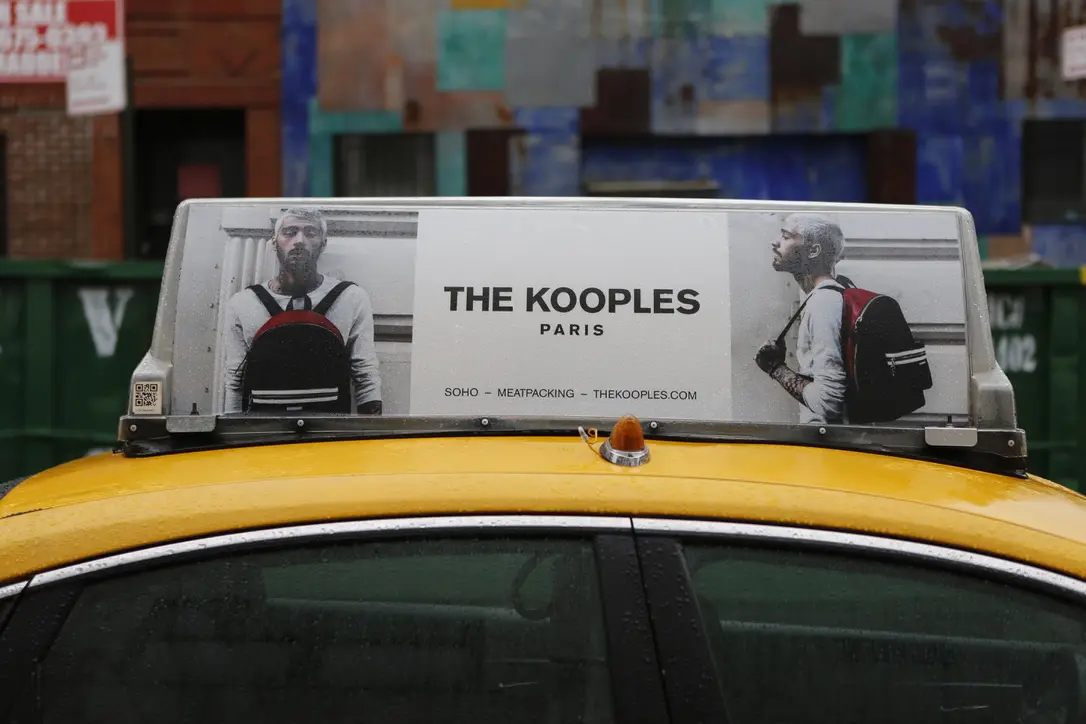You’ve likely seen your fair share of transit ads; some may even have persuaded you into making a purchase. If you’re promoting a brand or product and you want to reach as many people as possible, transit advertising might be the right option for you.
While many forms of advertising target specific segments of the population, investing in a transit ad campaign ensures a much wider reach. For small businesses and those looking to stretch their marketing budget as far as possible, transit advertising is a good option to consider.
What is Transit Advertising?
Transit advertising refers to any ad that appears on a mode of transportation. Typically, transit ads are at eye-level, affixed to the walls of a subway station or transit car. When it comes to getting the word out about your brand, out-of-home (OOH) advertising is one of the most effective methods out there. OOH displays include billboards, bus wraps, mobile billboards, and more. The idea is that you maximize exposure by choosing to market where the highest volume of consumers already are.
How did it start?
Transit ads are some of the oldest forms of advertising. Originally appearing on horse-drawn carriages and in railway stations, transit ads have come a long way. While the ads of the 19th century were simple and straightforward, the transit ads you see today can be interactive, digital, or even 3-D. The most effective transit ads tell a story, connecting consumers with your brand by using graphics that are both eye-catching and memorable.
Although the transit ads you see today are more advanced than the ads that appeared on horse-drawn carriages, it's still one of the most cost-effective strategies for promoting your brand. Whether you advertise on billboards or city buses, designing a strong OOH campaign can capture the attention of thousands of consumers.
Types of Transit Advertising
Choosing the right type of transit advertising will depend largely on your location. Larger, denser cities rely more heavily on public transit like subways, while sparsely populated towns are more likely serviced by a bus system. Research your target area well and determine the best option for your brand.
Bus Media
Bus media is the practice of utilizing city buses and infrastructure to promote your brand. Even if you don’t regularly take the bus, you likely interact with bus ads every day. Ads adorn bus shelters at hundreds of thousands of bus stops across the United States; and a bus wrap will traverse the city every day, ensuring widespread exposure. Marketing through bus ads can spread the word about your marketing campaign to a wide swath of potential consumers.
Commuter Rail
Similar to bus media, commuter rail advertisements ensure maximum ad exposure. Essentially, on a commuter rail you have a captive audience. As customers commute to and from work, they will come into contact with your ads every day. Whether the ads are located inside the rail car or along station walls, you’ll have multiple points of contact with your target demographic.
Subway Media
Depending on what location you choose to advertise in, you may be able to reach a significant number of people using subway media. While subways are less common in western cities, older east coast hubs like Washington D.C. and New York City see a high volume of commuter traffic in subways. Subway media ensures that your ads reach people on their commute by affixing ads to the walls both inside and outside the subway car.
Mobile Billboards
Mobile billboards are a great way to take your message on the road. Literally. When it comes to maximizing ad exposure, affixing your design to the side of a truck or other large vehicle is hard to beat. Trucks and other high-occupancy vehicles get right in the middle of the action, traveling to the densest parts of a city or town. The large size of a truck panel also gives you a big eye-catching canvas. For smaller cities and towns with less public transit or billboard space, mobile billboards are an excellent option.
Taxis
Popular in crowded cities like New York and San Francisco, taxis offer advertising space on the go. Ads can be placed on top of a taxi or wrapped around the car itself, garnering hundreds of views every day. The benefit of using taxis to advertise your brand is that you can be sure your content will be going to the densest parts of a city, as taxi drivers flock to the places where people are most likely to gather.
How does it fit into your OOH advertising strategy?
Advantages of transit advertising
Modern life offers abundant advertising opportunities, whether it’s through social media, print ads, digital media, or OOH ads, choosing the right mode depends on your target audience and campaign objectives. Transit media is one of the most popular forms of advertising if you’re simply trying to connect with as many people as possible, without targeting specific segments of the population.
Providing accessibility to even the most isolated communities, transit ads reach far and wide. They also offer a relatively inexpensive way to market your business and connect with new segments of the population. By offering competitive pricing, transit companies can give you the biggest bang for your buck if you’re a small business owner looking to target consumers in your neighborhood.
Transit provides you with a wide variety of advertising opportunities for relatively little upfront cost. If you’re looking for high visibility and widespread exposure, consider developing a transit media campaign.


